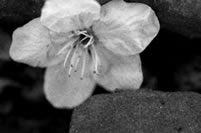

The History of Martial Arts |
by Marc Kahn
 Kung Fu can trace its origins back some 4000years to 2674 BC, when Emperor Huang Ti of China used a rudimentary form of martial arts called Chiou Ti as a form of individual combat and military tactic. In 2600 BC a new style of combat named Go-Ti came into being which had wrestling as its main focus. At the same time monks developed Cong Fu. This was a form of medical gymnastics designed to keep body healthy, mind alert, and spirit tranquil.
Kung Fu can trace its origins back some 4000years to 2674 BC, when Emperor Huang Ti of China used a rudimentary form of martial arts called Chiou Ti as a form of individual combat and military tactic. In 2600 BC a new style of combat named Go-Ti came into being which had wrestling as its main focus. At the same time monks developed Cong Fu. This was a form of medical gymnastics designed to keep body healthy, mind alert, and spirit tranquil.
In about 600 BC, Confucius declared it necessary to cultivate the martial arts. Lao Tzu (a Taoist sage), living at the same time, composed the Tao Te Ching (The Power and the Way), the original book and foremost source of Taoism. Taoism (pronounced "Daoism") is a philosophical system, but also a way of life and a method of achieving higher consciousness. Legend has it that it was passed down from a legendary culture, known as the “Sons of Reflected Light” some 14000 years ago. It taught scholarship, meditation and alchemy. Taoist principles are today still considered an important and relevant study, and many of its principles have been understood to be similar to theories in modern, cutting edge, quantum physics and biology.
Taoism became enmeshed with the arts of Cong Fu and Go-Ti, which by this time had become fused into one system. Taoist monks became Cong Fu/Go-Ti experts, and martial arts practitioners began to follow Taoism. This Cong Fu/Go-Ti system formed the beginnings of what we now know as Kung Fu. Although the term has many meanings, for example "hard work", it can be best understood as "patient accomplishment" - the mastery of a skill through the investment of time and energy. (Kung means "energy” in Chinese and Fu means "time"). Therefore when a person has mastered a particular skill, he may be said to have "kung fu". The term became associated with martial arts because the mastery of any martial arts system requires years of dedicated practice.
In 527 AD, Da Mo, an Indian Buddhist prince came to preach in the Buddhist Shao Lin Temple, a Buddhist monastery. He saw the Shao Lin priests were weak and sickly and sought to help them. Legend has it that he meditated in front of a wall for nine years. The results of this meditation were written in two books. The Yi Gin Ching taught ways to increase the strength and health of the physical body. An exercise regimen known as the "18 Movements of the Arhan Hands" or "18-Monk Boxing" which was practiced by the monks was based on this work. The Shi Sui Ching was primarily a religious treatise explaining methods for developing the Buddhist spirit by using Chi energy. These teachings were incorporated into kung fu and made a great impact on the art. From Da Mo comes the mystical concept of "empty mind" and other meditations. Breathing techniques in kung fu were also further developed in Da Mo’s teachings.
The next major development followed a drift away from the Buddhist influence and back into the Taoist influence. In 1417 a Taoist monk Chang San-fung invented a radical new element of kung fu known as "soft fist" or "internal style". This is a slow, relaxed and mystical style, as opposed to the older styles, which were hard and externally orientated. Chang San-fung believed that the intensive physical exertion of the former styles of Kung Fu was against Taoist philosophy. The focus instead should be on internal energy and harmony. Taoist temples became centres of Kung Fu knowledge. One such existing internal style derived from the Taoist way is "Tai Chi Chuan" or "Mind Fist".
In 1530, the Shao Lin Temple once more gained great influence in the growth of Kung Fu. A Shao Lin Temple priest named Chueh Yuan decided to rejuvenate Shao Lin martial art and restore it to its former glory. Chueh created five animal styles or forms: Dragon - to cultivate spirit, Tiger - to develop tough bones, Leopard - to build strength, Crane - to strengthen sinew, and Snake - to generate chi. Chueh combined hard and soft techniques in his forms.
After this restoration, the major milestones of development of Kung Fu became inextricably bound with historic events involving international influences on China. In 1644, the Manchurians invaded China and replaced the Ming Dynasty with the Ch'ing dynasty. The Shao Lin Temples became hives of revolutionaries. In order to counteract the threat from these insurrectionists, the Manchurians destroyed the Shao Lin Temples. The inhabitants of the Temples fled, and in this way Kung Fu knowledge was spread. At the same time, however, it became diluted amongst the masses and hundreds of new styles developed.
MODERN KUNG FU
In 1900 the Boxer Rebellion against the Manchurians occurred. Kung fu practitioners joined the struggle against the invaders. However, their fighting skills were no match for the now sophisticated Manchurian army. Despondent, Kung Fu practitioners turned to crime. Hence the once-esteemed esoteric Kung Fu societies of a forgotten age became mafia-like crime organisations known as the Triads. During World War II, Japan invaded China and gave representative power to the Triads. As a result, these organizations became very powerful. After World War II, Kung Fu knowledge spread to the West, and hundreds of new forms evolved to make up the myriad of Kung Fu systems that exist today. These systems are sometimes as different from each other as Judo is from Karate.
The 1960’s marked not only an awakening in the socio-cultural and political ideology of the West but also of the martial arts world. The 60’s brought the revolutionary influence of the late Bruce Lee. Lee is famous because of his appearance in numerous movies, but many people are unaware of his major influence on the martial arts. Lee’s profound contribution was the release of Kung Fu from its traditional bounds. He placed less emphasis on forms and particular techniques as ends, and more on training as a means toward physical and mental health, self-growth, inner harmony, and peaceful inner simplicity.
Bruce Lee’s principle “Absorb what is useful and reject that which is useless” has become one of the most quoted statements in martial arts circles in recent years. Lee did not have one particular style that he trained. He taught that one must not bind oneself to the restrictions of a single style. He learned various martial arts including numerous styles of Kung Fu, Thai Boxing, Kali, Judo, Ju Jitsu, and Aikido. He also practiced western boxing, wrestling, fencing and French Savate. Bruce Lee’s impact spread far and wide, and has radically awakened the consciousness of many martial artists all over the world.


Home | Fanchento | Federation | News | Articles | Products | Links |

